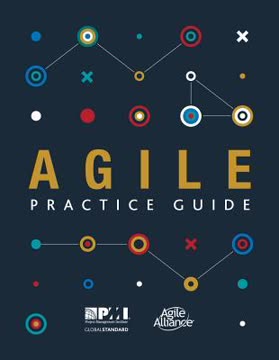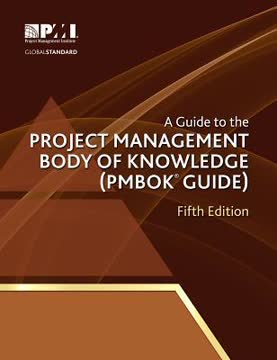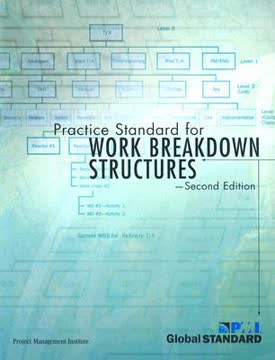Key Takeaways
1. Agile: A Mindset for High-Uncertainty Work.
This embodiment of mindset, values, and principles defines what constitutes an agile approach.
Embrace uncertainty. Agile approaches are designed for projects with high rates of change, complexity, and risk, where requirements and solutions are not fully known upfront. Unlike predictable work with clear procedures, high-uncertainty work requires exploration and adaptation. Agile provides a framework to navigate this ambiguity effectively.
Values and principles. The Agile Manifesto, originating in software but applicable broadly, outlines core values like individuals and interactions, working products, customer collaboration, and responding to change. These values are supported by twelve principles emphasizing frequent delivery, welcoming change, collaboration, motivated individuals, and continuous improvement.
Lean and Kanban roots. Agile shares heritage with Lean thinking, focusing on delivering value, minimizing waste, transparency, and continuous improvement. The Kanban Method, a less prescriptive approach, visualizes workflow, limits work in progress, and manages flow, offering a flexible way to start applying lean/agile concepts.
2. Selecting the Right Project Life Cycle.
Each project finds a spot on the continuum that provides an optimum balance of characteristics for its context.
Continuum of approaches. Project life cycles exist on a spectrum from predictive (plan-driven, sequential) to agile (iterative and incremental). Iterative cycles allow feedback for improvement, while incremental cycles deliver usable finished portions. Agile combines both, refining work and delivering frequently to adapt to change and provide value.
Hybrid is common. Many projects don't fit neatly into one category and benefit from hybrid approaches, combining elements of predictive, iterative, incremental, or agile methods. This could be agile development followed by a predictive rollout, or a predominantly predictive project incorporating agile techniques for specific uncertain components.
Suitability matters. Choosing the right life cycle depends on project characteristics like requirement stability, technological uncertainty, risk, and the need for early value delivery. Tools like agile suitability filters can help assess project and organizational factors to determine the best fit, guiding conversations about potential risks and necessary adaptations.
3. Servant Leadership Empowers Agile Teams.
Servant leadership is the practice of leading through service to the team, by focusing on understanding and addressing the needs and development of team members in order to enable the highest possible team performance.
Lead by serving. In agile, the project manager or team facilitator acts as a servant leader, shifting focus from command and control to supporting and enabling the team. This involves facilitating collaboration, removing impediments, coaching team members, and managing relationships within and outside the team.
Focus on purpose, people, process. Servant leaders help the team define the project's "why" (purpose), create an environment where people can succeed, and facilitate the team's discovery and refinement of its work process. They prioritize team effectiveness and value delivery over rigid adherence to a specific method.
Remove obstacles. A key responsibility is identifying and removing organizational impediments that hinder the team's agility, such as bureaucratic processes, siloed departments, or slow approval cycles. Servant leaders advocate for the team and influence the organization to support agile ways of working.
4. Building Effective Agile Teams.
Agile optimizes the flow of value, emphasizing rapid feature delivery to the customer, rather than on how people are “utilized.”
Cross-functional and dedicated. Effective agile teams are typically small (3-9 members), cross-functional (possessing all skills needed to deliver value), and ideally, members are 100% dedicated to the team. This structure minimizes dependencies, enhances collaboration, and speeds up value delivery.
Generalizing specialists. Teams benefit from "T-shaped" people – individuals with deep expertise in one area but broad skills and a willingness to help in others. This versatility reduces bottlenecks and encourages collective ownership of work, promoting flow efficiency over individual resource efficiency.
Team roles and environment. Common roles include cross-functional team members, a Product Owner (responsible for product direction and backlog prioritization), and a Team Facilitator/Servant Leader. A collaborative workspace, whether colocated or virtual with effective tools, is crucial for communication and team dynamics.
5. Delivering Value Through Agile Practices.
The single most important practice is the retrospective because it allows the team to learn about, improve, and adapt its process.
Frequent delivery and feedback. Agile teams deliver working product increments frequently (e.g., every few weeks) to get rapid feedback from customers and stakeholders. This allows for course correction and ensures the product meets evolving needs, increasing customer satisfaction and reducing rework.
Core practices. Common practices include:
- Backlog refinement: Preparing and detailing upcoming work items (stories).
- Daily standups: Short team meetings to synchronize and identify impediments.
- Demonstrations/Reviews: Showing completed work to stakeholders for feedback.
- Planning: Iteration-based teams plan work for the next timebox; flow-based teams pull work as capacity allows.
- Retrospectives: Regularly reflecting on the process to identify improvements.
Technical excellence. Practices like continuous integration, automated testing, and test-driven development are crucial for maintaining product quality and enabling rapid, sustainable delivery. Spikes (timeboxed research) help teams learn about technical or functional unknowns.
6. Measuring Progress Empirically.
Agile favors empirical and value-based measurements instead of predictive measurements.
Focus on delivered value. Instead of relying on subjective "percent done" or static baselines, agile measures progress based on completed, working features or increments of value. This provides empirical data reflecting the true state of the project.
Useful metrics. Agile teams use various metrics to understand their performance and forecast future delivery:
- Velocity: The amount of work (e.g., story points) completed per iteration (for iteration-based teams).
- Lead/Cycle Time: The time it takes for a work item to move through the system (for flow-based teams).
- Burnup/Burndown Charts: Visualizing completed work versus total work over time.
- Cumulative Flow Diagrams: Showing work in progress and bottlenecks across the workflow.
Transparency and learning. These metrics provide transparency, helping teams and stakeholders see progress, identify issues early, and make informed decisions. They support continuous learning and adaptation, allowing teams to improve their predictability over time.
7. Organizational Factors Influence Agility.
Project agility is more effective and sustained as the organization adjusts to support it.
Culture is key. Organizational culture significantly impacts agile adoption. A culture of safety, trust, transparency, and continuous learning is essential. Assessing the current culture helps identify areas that may support or hinder agile practices.
Systemic changes needed. Implementing agile often requires changes beyond project teams, affecting areas like procurement, finance, HR, and management structures. Siloed departments, fixed-price contracts, or individual performance metrics can impede agility if not adapted.
PMO evolution. Project Management Offices (PMOs) can support agility by becoming value-driven, invitation-oriented (offering services rather than mandating), and multidisciplinary centers of excellence. They can provide training, coaching, standards, and facilitate coordination across multiple agile teams or programs.
8. Tailoring Agile Approaches Requires Experience.
Tailoring is an advanced topic that should be undertaken by experienced practitioners who have been successful using agile approaches as originally described in multiple environments before they consider tailoring them.
Start with the basics. Before modifying an agile framework, teams should first gain experience by successfully implementing it as designed. This "Shu" phase builds foundational understanding before attempting to adapt ("Ha") or invent ("Ri") new approaches.
Tailor collaboratively. Any changes to practices should be discussed and agreed upon by the people they will impact. This fosters buy-in and reduces resistance. Experimenting with changes for a short period and reflecting on their effectiveness is a good approach.
Consider context. Tailoring should be influenced by specific project and organizational factors, such as team size, geographic distribution, criticality, regulatory constraints, and stakeholder buy-in. Removing a practice without understanding its purpose or counterbalancing practices can create new problems.
Last updated:
FAQ
1. What is the "Agile Practice Guide" by Project Management Institute and Agile Alliance about?
- Comprehensive Agile Overview: The "Agile Practice Guide" provides practical guidance for project leaders and teams transitioning to or working within agile approaches, covering both foundational concepts and advanced practices.
- Bridging Predictive and Agile: The guide serves as a bridge between traditional predictive (waterfall) project management and agile methodologies, helping teams understand when and how to apply each.
- Industry-Agnostic Application: While rooted in software development, the guide extends agile principles to industries like manufacturing, education, and healthcare.
- Collaborative Authorship: Developed jointly by PMI and Agile Alliance, it reflects a broad range of practitioner expertise and real-world experience.
2. Why should I read the "Agile Practice Guide" by Project Management Institute?
- Practical Guidance: The guide offers actionable advice, tools, and situational guidelines for implementing agile in real-world projects.
- Tailored for Transition: It is especially valuable for teams and organizations navigating the "messy middle-ground" between predictive and agile approaches.
- Broad Applicability: The content is relevant for both software and non-software projects, making it useful across various industries.
- Credible Source: Authored by leading organizations in project management and agile, it provides trusted, consensus-driven recommendations.
3. What are the key takeaways from the "Agile Practice Guide"?
- Agile is a Mindset: Agile is defined by values and principles (from the Agile Manifesto), not just a set of practices or frameworks.
- Life Cycle Selection Matters: Projects should choose predictive, iterative, incremental, agile, or hybrid life cycles based on their unique characteristics and uncertainty levels.
- Servant Leadership is Central: Empowering teams through servant leadership and fostering self-organization are critical for agile success.
- Continuous Improvement: Practices like retrospectives, frequent delivery, and empirical measurement drive ongoing team and process improvement.
4. How does the "Agile Practice Guide" define and differentiate predictive, iterative, incremental, agile, and hybrid life cycles?
- Predictive Life Cycle: Emphasizes upfront planning, sequential execution, and is best for projects with clear, stable requirements.
- Iterative Life Cycle: Focuses on refining work through repeated cycles and stakeholder feedback, suitable for projects with evolving requirements.
- Incremental Life Cycle: Delivers usable portions of the product early and often, optimizing for speed and early value.
- Agile Life Cycle: Combines iterative and incremental approaches, delivering frequent, valuable increments and adapting to change.
- Hybrid Approaches: Mix elements of the above to fit project context, often used as a transition strategy or to address specific risks.
5. What is the Agile Manifesto and how does the "Agile Practice Guide" interpret its values and principles?
- Four Core Values: The Agile Manifesto values individuals and interactions, working software, customer collaboration, and responding to change.
- Twelve Principles: These include early and continuous delivery, welcoming changing requirements, and regular reflection for improvement.
- Mindset Over Method: The guide emphasizes that agile is a mindset defined by these values and principles, not just a set of tools or frameworks.
- Practical Mapping: The guide maps its content to the Manifesto, showing how its practices support each value and principle.
6. How does the "Agile Practice Guide" recommend selecting the right life cycle or approach for a project?
- Assess Uncertainty and Risk: Use project characteristics like requirements clarity, technical uncertainty, and rate of change to guide life cycle selection.
- Suitability Filters: The guide provides assessment models and radar charts to help teams evaluate whether agile, predictive, or hybrid approaches fit best.
- Tailoring is Key: Teams are encouraged to tailor their approach based on project factors such as team experience, demand patterns, and organizational culture.
- Iterative Experimentation: Try new techniques in low-risk settings, reflect, and adapt before scaling up.
7. What are the essential roles and team structures described in the "Agile Practice Guide"?
- Cross-Functional Teams: Agile teams should include all necessary skills to deliver value, promoting collaboration and reducing dependencies.
- Key Roles: The guide highlights the product owner (guides product direction), team facilitator (servant leader, e.g., scrum master), and cross-functional team members.
- Generalizing Specialists: Encourages "T-shaped" team members who have deep expertise but can contribute across multiple areas.
- Team Size and Dedication: Optimal team size is 3-9 members, ideally 100% dedicated to the team for maximum throughput and collaboration.
8. How does the "Agile Practice Guide" describe servant leadership and the role of the project manager in agile environments?
- Servant Leadership Defined: Leaders serve the team by removing impediments, facilitating collaboration, and fostering a safe, trusting environment.
- Project Manager's Evolving Role: In agile, project managers shift from command-and-control to coaching, mentoring, and enabling self-organization.
- Empowering Teams: Servant leaders help teams define purpose, support individual growth, and promote team ownership of outcomes.
- Organizational Advocacy: They also work to address organizational impediments and educate stakeholders about agile benefits.
9. What are the most important agile practices and tools highlighted in the "Agile Practice Guide"?
- Retrospectives: Regular reflection sessions to identify improvements in process and teamwork.
- Backlog Management: Preparation and refinement of a prioritized list of work items (stories) to ensure continuous value delivery.
- Daily Standups: Short, focused meetings to synchronize work, identify impediments, and foster accountability.
- Demonstrations/Reviews: Frequent product demos to gather feedback and validate progress with stakeholders.
- Technical Practices: Emphasizes continuous integration, test-driven development, and limiting work in progress for quality and flow.
10. How does the "Agile Practice Guide" address measurement and reporting in agile projects?
- Empirical Metrics: Focuses on measuring completed work (e.g., finished features, story points) rather than percent complete or predictive baselines.
- Visual Tools: Recommends using burndown/burnup charts, cumulative flow diagrams, and Kanban boards to track progress and identify bottlenecks.
- Qualitative Measures: Encourages teams to assess business satisfaction, team morale, and other qualitative indicators.
- Forecasting: Uses velocity and cycle time to predict project completion, emphasizing transparency and adaptability.
11. What organizational considerations and challenges are discussed in the "Agile Practice Guide" for adopting agile?
- Change Management: Highlights the need for organizational change management to support agile adoption, including executive sponsorship and cultural readiness.
- Overcoming Silos: Recommends forming cross-functional teams and aligning incentives to promote collaboration over departmental efficiency.
- Agile PMO: Describes how the project management office can evolve to support agile teams through value-driven, invitation-oriented, and multidisciplinary services.
- Scaling Agile: Discusses frameworks and strategies for coordinating multiple agile teams and scaling agile practices across the organization.
12. What are the main agile frameworks and methods covered in the "Agile Practice Guide," and how do they differ?
- Scrum: An iterative, timeboxed framework with defined roles (product owner, scrum master, development team) and events (sprints, reviews, retrospectives).
- Kanban Method: Focuses on visualizing workflow, limiting work in progress, and optimizing flow without prescribed roles or iterations.
- eXtreme Programming (XP): Emphasizes technical excellence through practices like pair programming, test-driven development, and continuous integration.
- Hybrid and Scaling Frameworks: Includes Scrumban, Feature-Driven Development, DSDM, Agile Unified Process, SAFe, LeSS, and Disciplined Agile, each offering different structures for team size, complexity, and organizational needs.
- Framework Selection: The guide advises choosing or blending frameworks based on project context, team maturity, and organizational goals.
Bonus: What are some of the best quotes from the "Agile Practice Guide" and what do they mean?
- "Agile is a mindset defined by the Agile Manifesto values, guided by the Agile Manifesto principles, and enabled by various practices."
This emphasizes that agile is not just a set of tools, but a way of thinking and behaving. - "The value of project managers is not in their position, but in their ability to make everyone else better."
Highlights the shift from authority to servant leadership in agile environments. - "Culture eats strategy for breakfast." — Peter Drucker
Stresses that organizational culture is more influential than any formal plan or strategy in achieving agile transformation. - "Inspection without adaptation is wasted effort."
Reminds teams that continuous improvement requires not just reviewing outcomes, but also acting on lessons learned.
Review Summary
Agile Practice Guide receives mixed reviews. Some find it a useful introduction to agile concepts, particularly for beginners or those preparing for PMI certifications. Readers appreciate its clear structure and comparison of agile to traditional methods. However, many criticize its superficial coverage, lack of practical examples, and insufficient depth for implementing agile practices. Some view it as a high-level overview that doesn't add significant value beyond basic information. Translation issues and formatting problems in non-English editions are also mentioned. Overall, opinions vary widely on its effectiveness as a guide to agile project management.
Similar Books
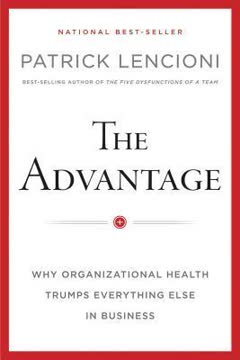
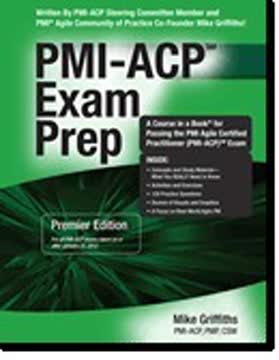
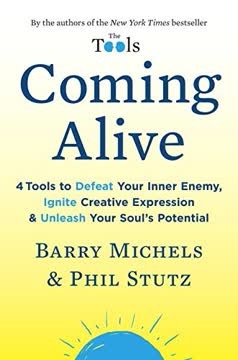

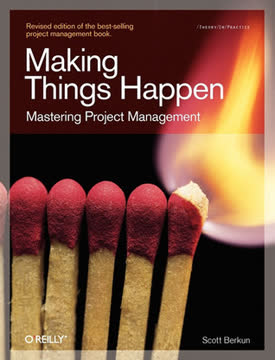
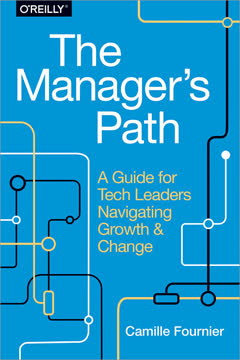
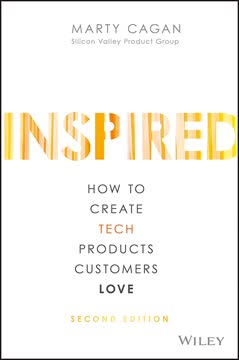
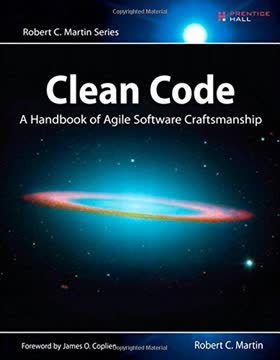
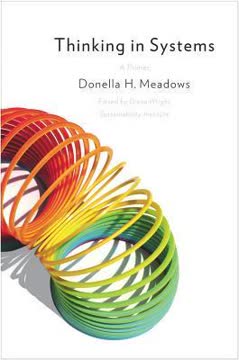
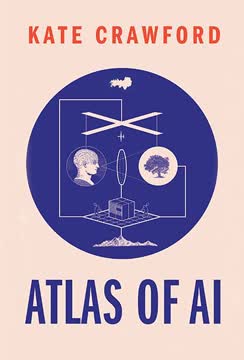
Download PDF
Download EPUB
.epub digital book format is ideal for reading ebooks on phones, tablets, and e-readers.
